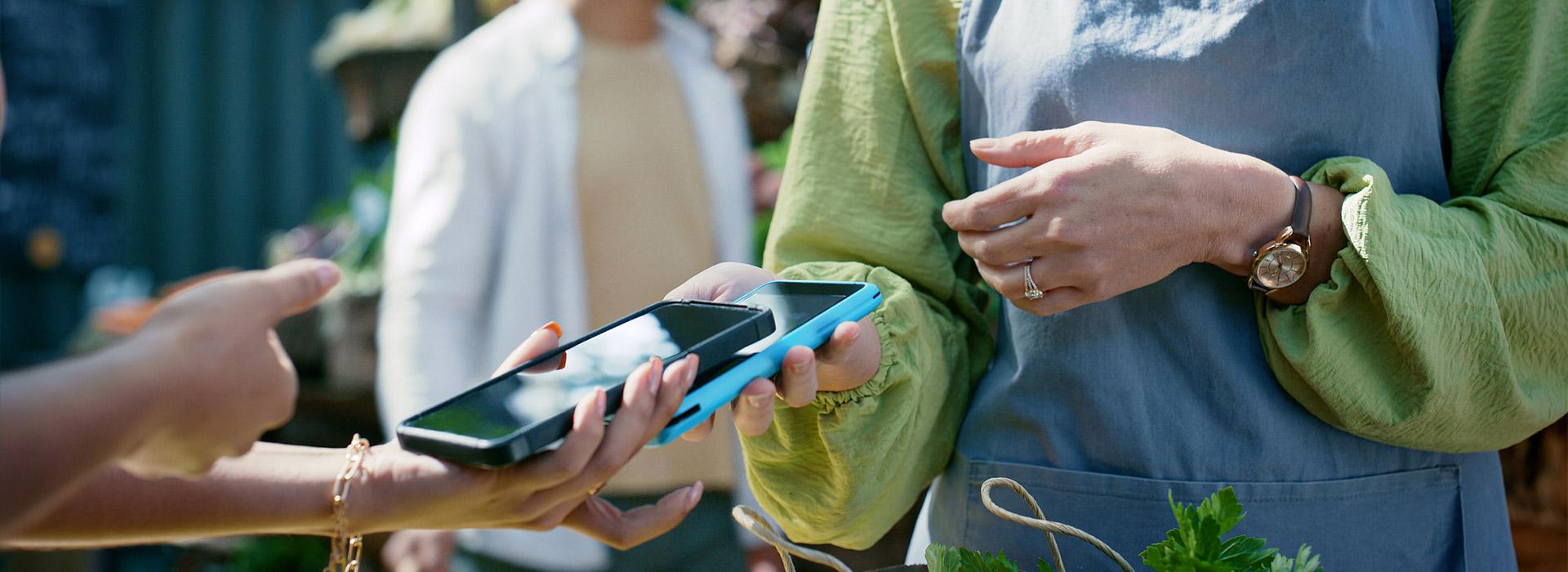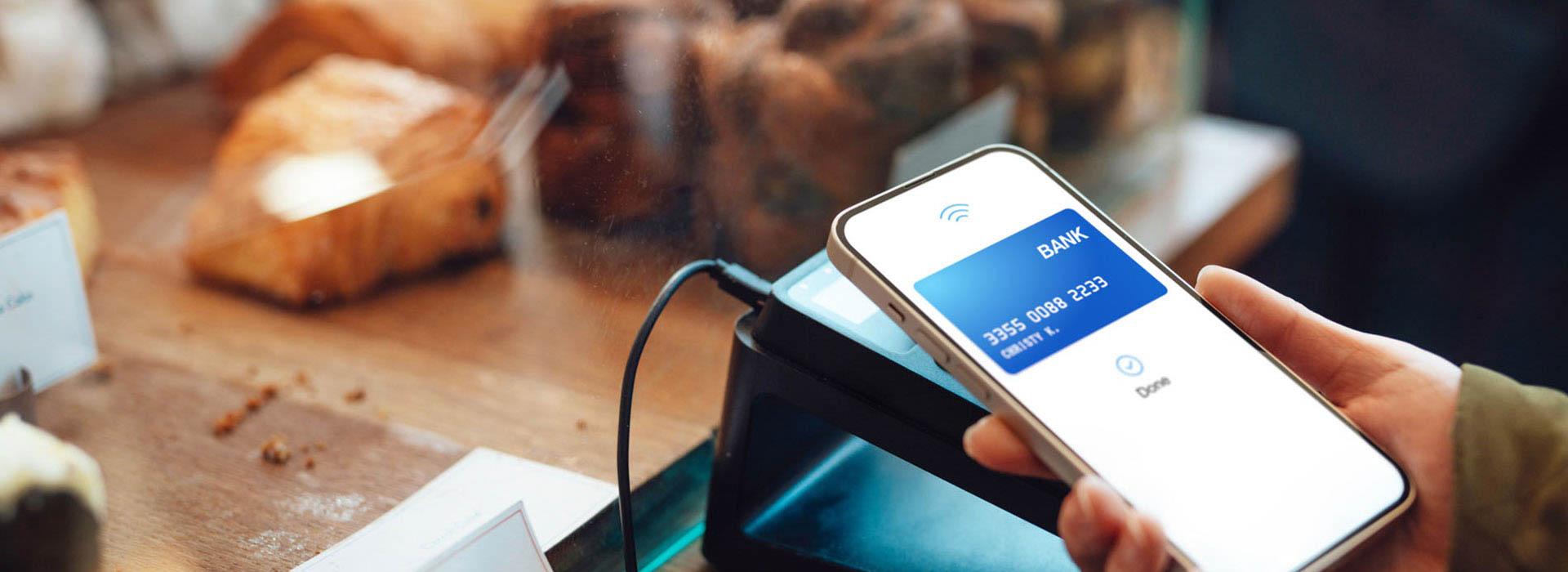
Digital wallet safety: Tips for securing mobile payments
Stay secure while using mobile payments with Worldpay.
A digital wallet is an app that allows you to make payments electronically or store electronic tickets you have purchased.
Services such as Apple Pay, Google Wallet and Samsung Pay are increasingly popular as they allow you to store payment information on your devices and facilitate quick and convenient transactions. These wallets make cashless payments easy. In our increasingly digital world, such payments are becoming a staple in everyday online and offline transactions.
Read our guide to mobile wallets and compare the e-wallets of Apple, Google and Samsung.
In this article, you'll find valuable tips and insights for using your digital wallet safely.
Are digital wallets safe?
Digital wallets are convenient – but are they safe?
They give you a single location for all your payment information and allow you to make payments online without filling in any details and in retail stores using your mobile.
These advantages of digital wallets have seen them become more popular than card on file payments.
It’s not just their ease of use that is driving this growth – they are also designed with secure, robust technologies to ensure they are as safe as they are convenient.
Let’s review some of these built-in security features that use advanced technology to protect your data.
- Encryption and tokenization: These processes convert your sensitive information into secure tokens, making unauthorized access to your data extremely difficult.
- Biometric authentication: Biometrics are used to grant access to the app. This is usually either your fingerprint or facial features.
- Multifactor authentication: This adds an additional verification step to ensure only authorized people gain access to your wallet. This step may be via an authenticator app, use biometrics or require a code sent to your mobile phone or email address.
These security measures make digital wallets a safe option for managing transactions.
Why digital wallet security is crucial
Maintaining a high level of security for your digital wallet is essential. With the rise in cybercrime and identity theft you must ensure that access to your sensitive information and bank details is not compromised. If these are accessed by someone else it could lead to significant financial loss, due to unauthorized transactions being made or fraudulent accounts created under your name.
The rise in mobile payments has attracted cybercriminals seeking to exploit vulnerabilities. With more transactions occurring online, hackers may try to deploy sophisticated methods, such as phishing attacks and malware, to gain access to digital wallets.
Let’s discuss these risks in a bit more detail and explain how you can overcome them.
Common digital wallet safety risks
Phishing attacks
Phishing attacks are deceptive attempts to steal sensitive information by pretending to be someone else. For example, you might receive emails or texts claiming to be from your digital wallet provider asking you to enter your login credentials on a fraudulent site.
Device theft or unauthorized access
If a device containing a digital wallet is stolen, unauthorized users may try to gain access to personal and financial information. This is why security measures such as passcodes or biometric authentication are essential. Locking devices and using strong authentication methods is vital for safeguarding information.
Public Wi-Fi risks
Using public Wi-Fi networks can expose users to significant security risks, because hackers can intercept data transmitted during such mobile payments. This vulnerability can allow cybercriminals to gain access to sensitive information, such as login credentials and payment details.
Fake apps or malware
Malicious apps or malware can be used to trick you into downloading software designed to steal payment information from your device. For example, you may install a fake digital wallet app that appears legitimate.
These risks underscore the importance of understanding and mitigating potential vulnerabilities in digital wallet security. For further insights on securing your payments, explore four reasons to use tokenization.
Security tips
Enable biometric authentication and strong passcodes
Using biometric authentication, such as fingerprints or facial recognition, adds an extra layer of security to your digital wallet. Additionally, setting a strong passcode helps prevent unauthorized access. Combining these methods (using two-factor authentication) ensures that even if your device is lost or stolen, your sensitive information remains protected.
Download only trusted apps from official app stores
To reduce the risk of malware or fake applications, download digital wallet apps only from reputable sources, such as the Apple App Store or Google Play Store. Verify the app's developer and read impartial reviews before installing them.
Avoid using digital wallets on public Wi-Fi
Public Wi-Fi networks may not be secure and can expose your personal information to cybercriminals. Avoid making financial transactions on these networks.
Update apps and operating systems
Keeping your apps and operating system up to date ensures you benefit from the latest patches against security vulnerabilities. Enable automatic updates to reduce the risk of threats that exploit outdated software.
Monitor financial transactions
Regularly reviewing your financial transactions helps identify unauthorized charges or suspicious activity early. If you notice any irregularities, report them to your bank or digital wallet provider immediately. By implementing these practical steps, you will enhance your mobile wallet security.
Can a digital wallet be hacked?
While the steps outlined above – and the in-built security features of digital wallets – provide a great deal of protection, digital wallets can be hacked by sophisticated criminals.
If you think your wallet may have been compromised, take these steps to mitigate risk.
- Contact your bank or digital wallet provider immediately. They can secure your accounts and monitor for suspicious activity.
- Disable or lock your device remotely. Many devices offer the ability to disable or lock them remotely, which will prevent unauthorized access to your digital wallet.
- Change all associated passwords and enable stronger authentication. Change the password for your digital wallet and any linked accounts. If you haven't already, select stronger authentication methods, such as multifactor authentication.
- Report fraudulent activity. Document and report any unauthorized transactions to your bank and local police.
- Monitor your bank account. Regularly check your bank statements and credit reports for unusual activity. Early detection is crucial to mitigating the impact of identity theft.
Conclusion
Digital wallets offer both convenience and security, but there is a lot you can do to enhance security even further. By implementing our recommended security tips and staying informed about potential risks, you can confidently use your digital wallet for transactions.
With the right precautions, digital wallets provide a safe and efficient way to manage your payments.
Explore Worldpay’s convenient in-store payment solutions for facilitating digital payments.
Related Insights


